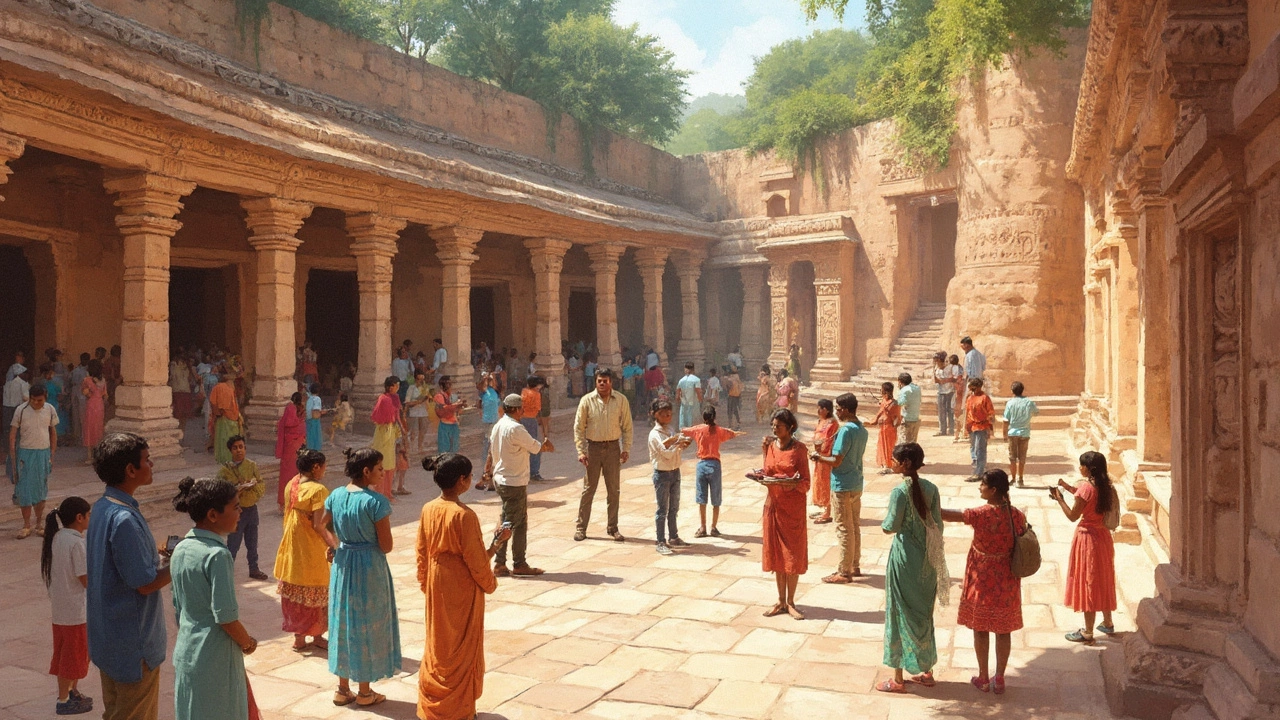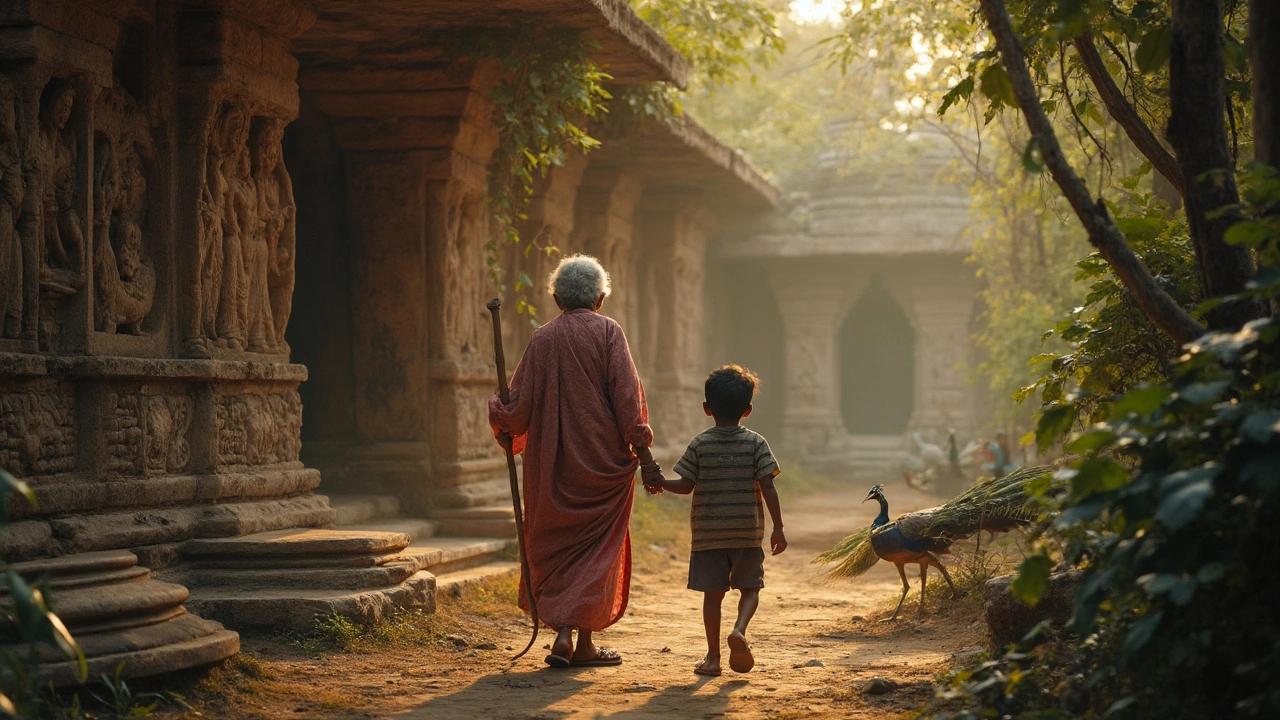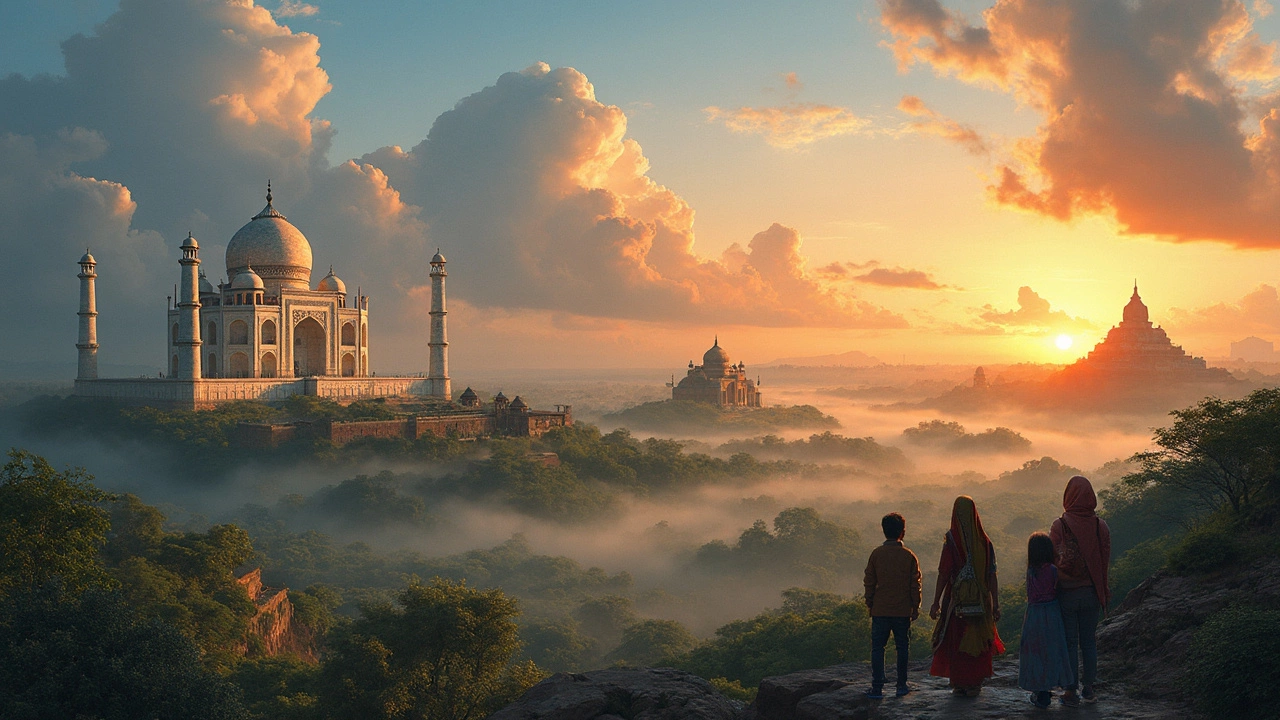If you’re scrolling through travel Instagram, you’ve seen the usual Taj Mahal shots or people twirling in front of some fort ruins. India, though, is more than just a backdrop for influencers—it's an absolute powerhouse when it comes to World Heritage Sites. You might think Italy or China have it all, but guess where India stands? Spoiler: it’s top five. There’s drama in not just how many official UNESCO gems India guards, but in the wildly different cultures, religions, and wild habitats they show off. Who knew you could go from ancient Buddhist caves to a living Himalayan mountain train, and all technically in the same country?
India's Global Rank in World Heritage Sites
Let’s talk numbers because those always settle any argument. According to the official UNESCO tally as of June 2025, India sits at sixth place in the world for the number of World Heritage Sites, right after Italy, China, Germany, France, and Spain. The country currently boasts 42 World Heritage Sites, which break down into 34 cultural, seven natural, and one mixed site. This number puts India ahead of other heritage-rich countries like the UK, Russia, and Iran. UNESCO’s definition isn’t just about pretty places—each site has “outstanding universal value.”
Italy leads the scoreboard with 59 sites. China follows nearly neck-and-neck with 57. Germany and France each hover around high forties to low fifties, and Spain’s count drifts in the mid-forties. India’s spot at sixth is firm, but here’s the thing: new proposals keep coming from India, so the tally could edge up soon. And, just so you’re ready for your next quiz night: there are over 1,200 World Heritage Sites globally.
India’s collection is not just about numbers—each site tells a wildly different story. From prehistoric rock shelters in Madhya Pradesh to the Victorian Gothic buildings of Mumbai, India’s list is as diverse as its food. That spread is why UNESCO keeps spotlighting India for its intense cultural variety and conservation efforts that sometimes succeed against the odds.
There’s a lot of pride here. Indian families make pilgrimages to sites like Ajanta, Ellora, or Konark just as often as to modern attractions. And for us parents—like me, making Finn and Lorelei march up ancient temple steps instead of playing Minecraft—there’s the bonus of giving the kids a solid “I was here first” story for history class.
What Makes a World Heritage Site—and Why India Stands Out
UNESCO doesn’t just hand out the World Heritage title like party favors. There’s a checklist: a place must have outstanding universal value, and meet at least one special criterion out of ten categories. India’s strength? Most of its entries stand out for cultural heritage, meaning their architecture, carvings, or even city planning changed how we see civilization.
Many Indian sites carry stories spanning thousands of years—some are still used for their original purpose today. Take the Chola Temples, for example. You’re not just looking at a ruin but at an epicenter of ongoing rituals and celebrations. Same goes for the Sanchi Stupa, which has seen non-stop Buddhist use since ancient times. Unlike many Western monuments, a fair chunk of Indian sites are living, pulsing with people and activity. This living heritage has always set India apart on the global stage.
Then you’ve got natural wonders. Think of the Western Ghats: a biodiversity hotspot that scientists say houses more endemic species than almost anywhere else outside the Amazon. Kaziranga National Park is the last stronghold for two-thirds of the world’s wild one-horned rhinoceroses. Most countries are jealous of even one spot like this; India has a whole list.
India’s mixed site—the Khangchendzonga National Park—tops it off, combining cultural reverence (locals worship the landscape itself) with Himalayan scenery that could fill an entire season of Planet Earth. UNESCO loves stories about linking culture and nature, and India plays that card brilliantly.

Hidden Gems: The World Heritage Sites You Might Not Know
Everyone’s got selfies at the Taj Mahal, but what about the Qutb Minar’s ancient iron pillar (which doesn’t rust, by the way) or Bhimbetka’s caves that spill over with Stone Age art? Some of India’s World Heritage Sites are barely known even among locals. Let’s put a few off-the-beaten-track gems in the spotlight:
- Great Living Chola Temples (Tamil Nadu): These thousand-year-old temples glow with bronze sculptures and hidden sanctuaries. During local festivals, the temple grounds become a riot of color and music that you just don’t get in guidebooks.
- Group of Monuments at Mahabalipuram (Tamil Nadu): I dare anyone not to be amazed by the open-air bas-relief “Descent of the Ganges.” Picture this: rock carvings of elephants and gods, all weathered by the salty sea breeze.
- Champaner-Pavagadh Archaeological Park (Gujarat): It’s a long name but an even longer history. Imagine a city frozen in time—medieval mosques, Jain temples, and a fort that rises out of nowhere.
- Rock Shelters of Bhimbetka (Madhya Pradesh): Prehistoric cave paintings a hundred generations old. Young Finn once said it looked “like a treasure map from Indiana Jones.” Not wrong.
- Fatehpur Sikri (Uttar Pradesh): The ‘ghost city’ built by Emperor Akbar and abandoned soon after. Or so the story goes—the echoes in its red sandstone courtyards might make you believe it’s still alive.
There are also natural treasures. Nanda Devi and Valley of Flowers are like walking into a Monet painting, except with rhododendrons and Himalayan blue sheep. Just don’t expect perfect roads or Wi-Fi. Some sites feel stuck in time—but that’s their blessing and their challenge.
How India Protects and Promotes Its World Heritage Sites
Preservation isn’t always glamorous. Dust, pollution, crowds—these are everyday enemies. Indian authorities, along with UNESCO, fight a daily battle to keep these sites from falling apart. The Archaeological Survey of India (ASI) shoulders most local conservation work. They’ve got teams trained in everything from masonry to digital mapping so restoration doesn’t turn priceless carvings into clay blobs.
Recently, solar-powered lighting replaced old tungsten spots at several South Indian temples; this keeps walls cool and preserves artwork. In Kaziranga, anti-poaching teams use drones to track rogue hunters. The Indian Railways even jumped into heritage mode by restoring the Mountain Railways that snake through the Nilgiris and Darjeeling. Ask any kid riding that toy train if history is boring—you’ll get a surprised look and a rush for the next open window.
Tourism management can be tricky. Entry fees fund repairs—so do donations, local partnerships, and sometimes international crowdfunding. But there are also limits. Only a fixed number of visitors per day get into popular sanctuaries like Keoladeo Ghana, because birds don’t like crowds either.
Even neighboring communities play a part. At Sun Temple Konark, local dancers perform during the Chandrabhaga festival, keeping age-old rituals alive. In Hampi, villagers act as guides, recounting stories passed down for generations. The goal: make preservation a team effort, with everyone invested in saving what matters.
But there are headaches too. Sometimes, rapid urban growth outpaces heritage rules—old monuments find themselves boxed in by highways, markets, or even mobile towers. Conservation groups are pushing hard for better zoning and community education, but it’s an uphill battle, especially in cities expanding faster than a spilled cup of chai.

Tips for Visiting and Exploring Indian World Heritage Sites
Ready for a heritage adventure? Some quick tips before you go: First, try not to cram too much into one trip. Each site deserves more than a quick selfie—even if you have energetic kids like mine trailing behind! Early mornings are magic: less crowd, softer light for photos, and often cooler weather, especially in places like Fatehpur Sikri or Bodh Gaya.
Hire a local guide if you can. Many are history buffs, storytellers, or sometimes teenagers earning pocket money—and they’ll tell you everything TripAdvisor can’t. At the Sun Temple, one guide spun a story so wild, Lorelei still claims there’s a hidden tunnel to the ocean (sadly, no). Take sturdy shoes; some forts need serious climbing, and the stone paths around sites like Hampi can be slick after morning dew. Always pack water, a hat, and sunscreen, trust me—the sun can be brutal and there aren’t always vendors nearby.
Most major World Heritage Sites now have QR code guides, downloadable maps, and souvenir stands directly managed by the Archaeological Survey of India to make sure your money goes right back into conservation. For wildlife spots, bring binoculars and follow the guides’ advice. Tempting as it is to feed animals or take shortcuts, it only hurts fragile habitats.
If you’re serious about heritage travel, keep an eye on the UNESCO tentative list—India has over 50 sites nominated and waiting for the global spotlight. Places like the Temples of Bishnupur or Majuli River Island could join the World Heritage club any year.
Parents: involve the kids. Ask them to keep a travel journal, sketch carvings, or snap photos. You’ll get fresh stories (and probably some hilarious stick figures) to cherish later. World Heritage Sites are epic history lessons without the boring textbooks.
| Country | Number of World Heritage Sites (2025) |
|---|---|
| Italy | 59 |
| China | 57 |
| Germany | 52 |
| France | 50 |
| Spain | 48 |
| India | 42 |
| United Kingdom | 33 |
| Russia | 30 |
| Iran | 26 |
India’s spot in the World Heritage ranking isn’t just a number—it’s a collection of stories, sights, and ongoing battles between culture and chaos. Whether you’re a hardcore history buff, nature lover, or just a parent like me trying to make road trips a little more interesting, these sites remind us that adventure and meaning are sometimes just a train ride away.
